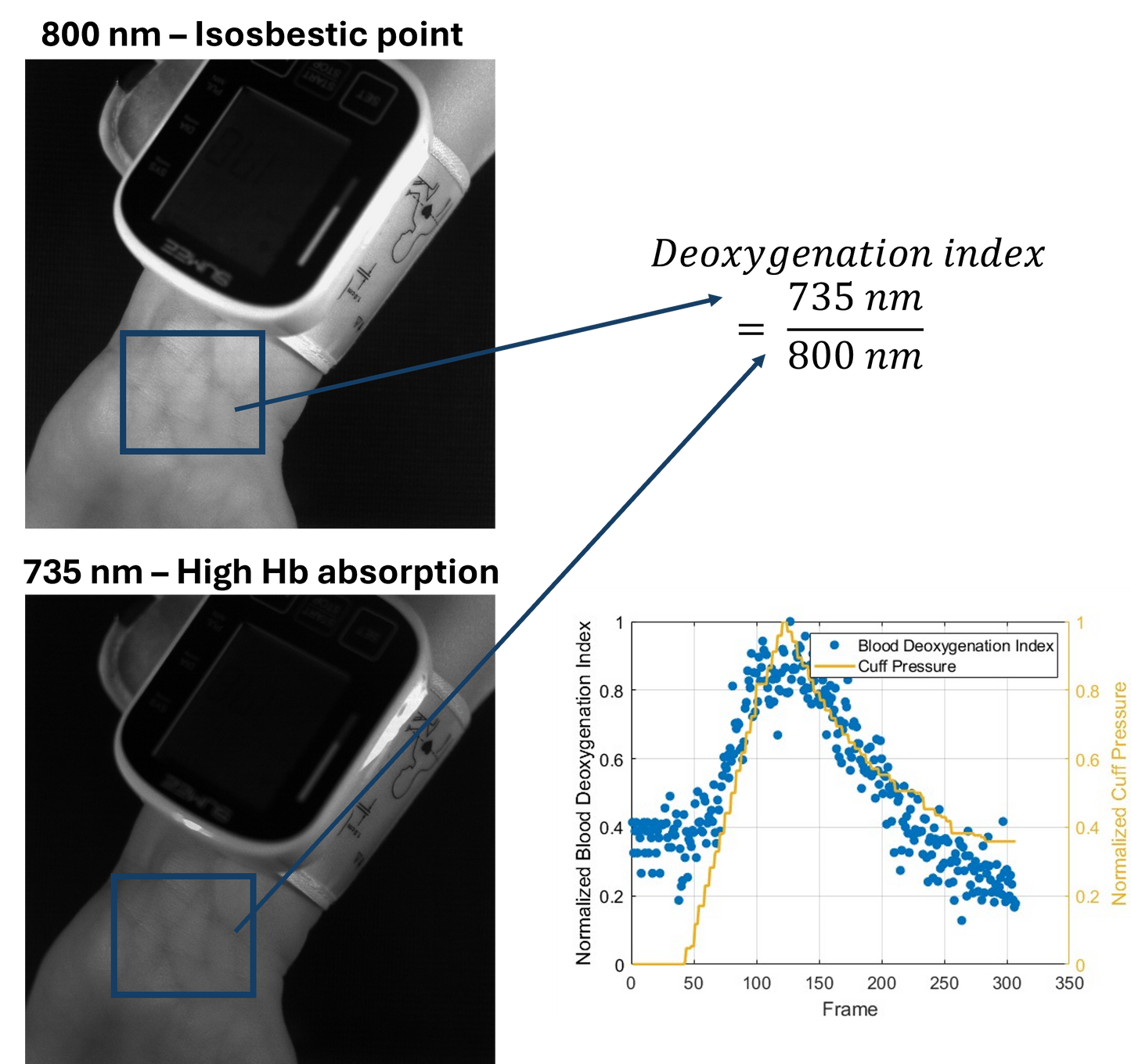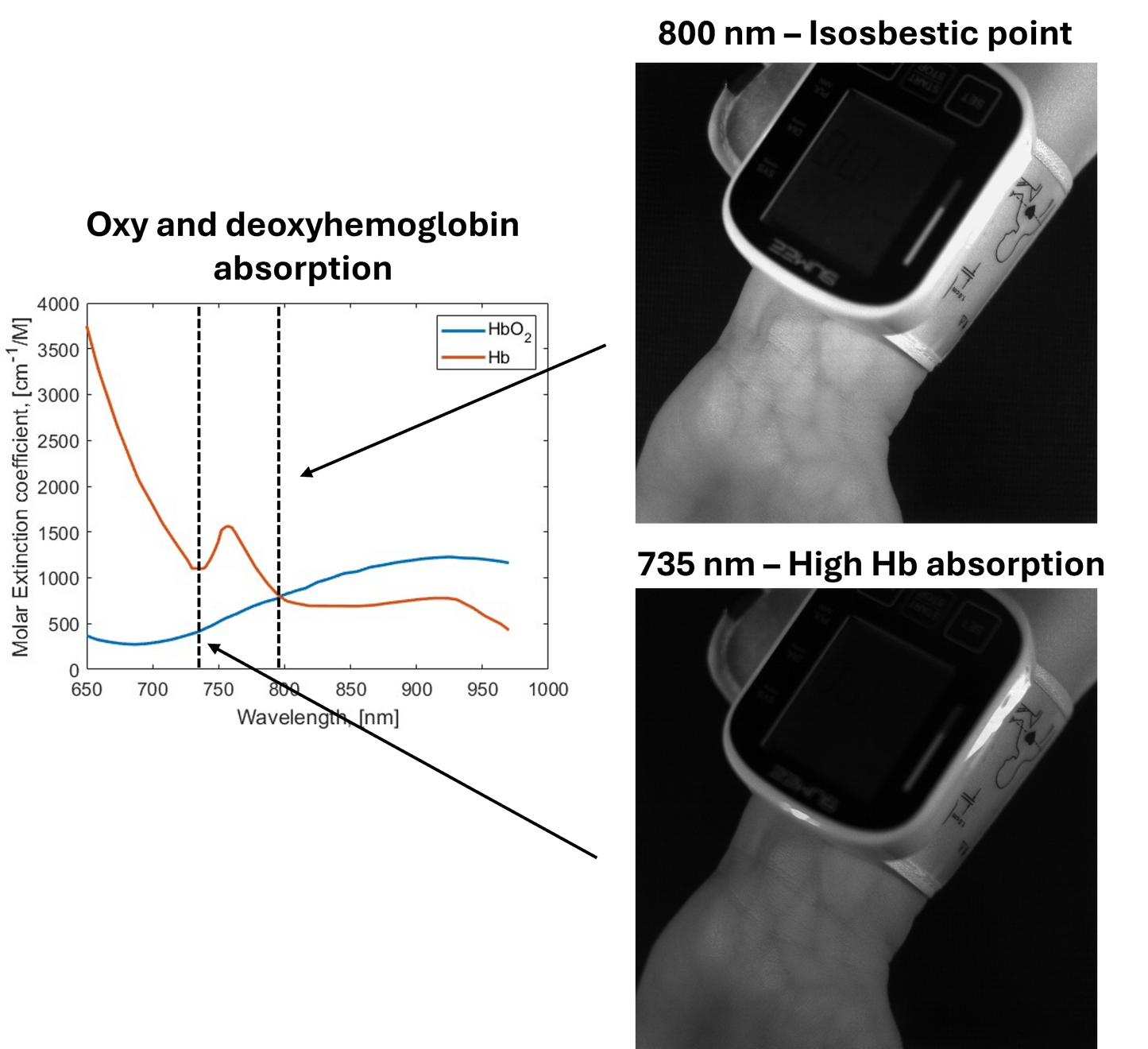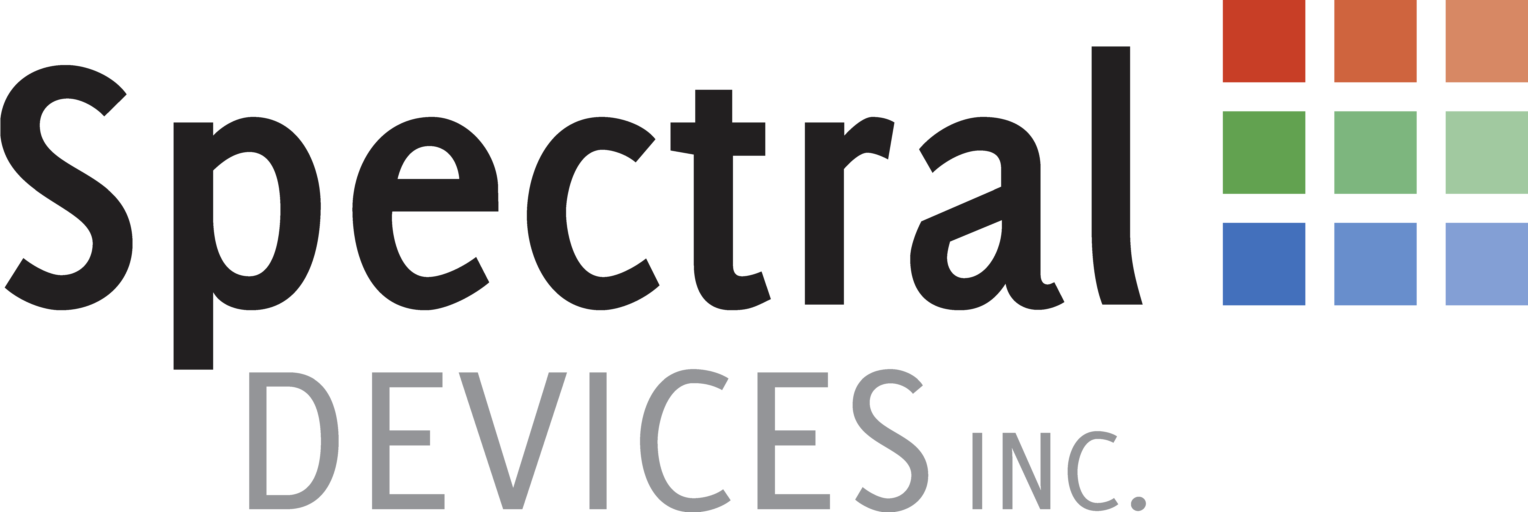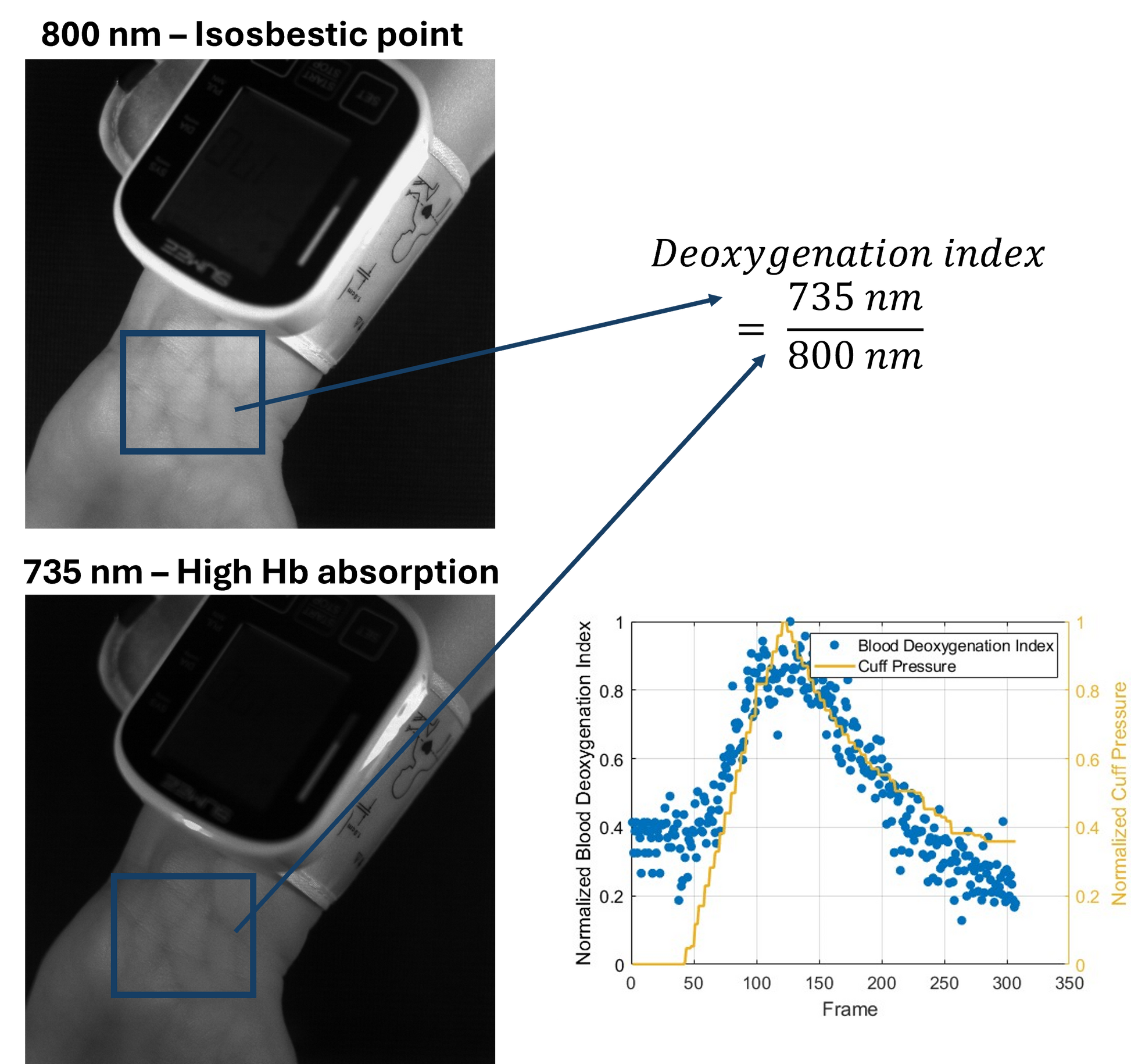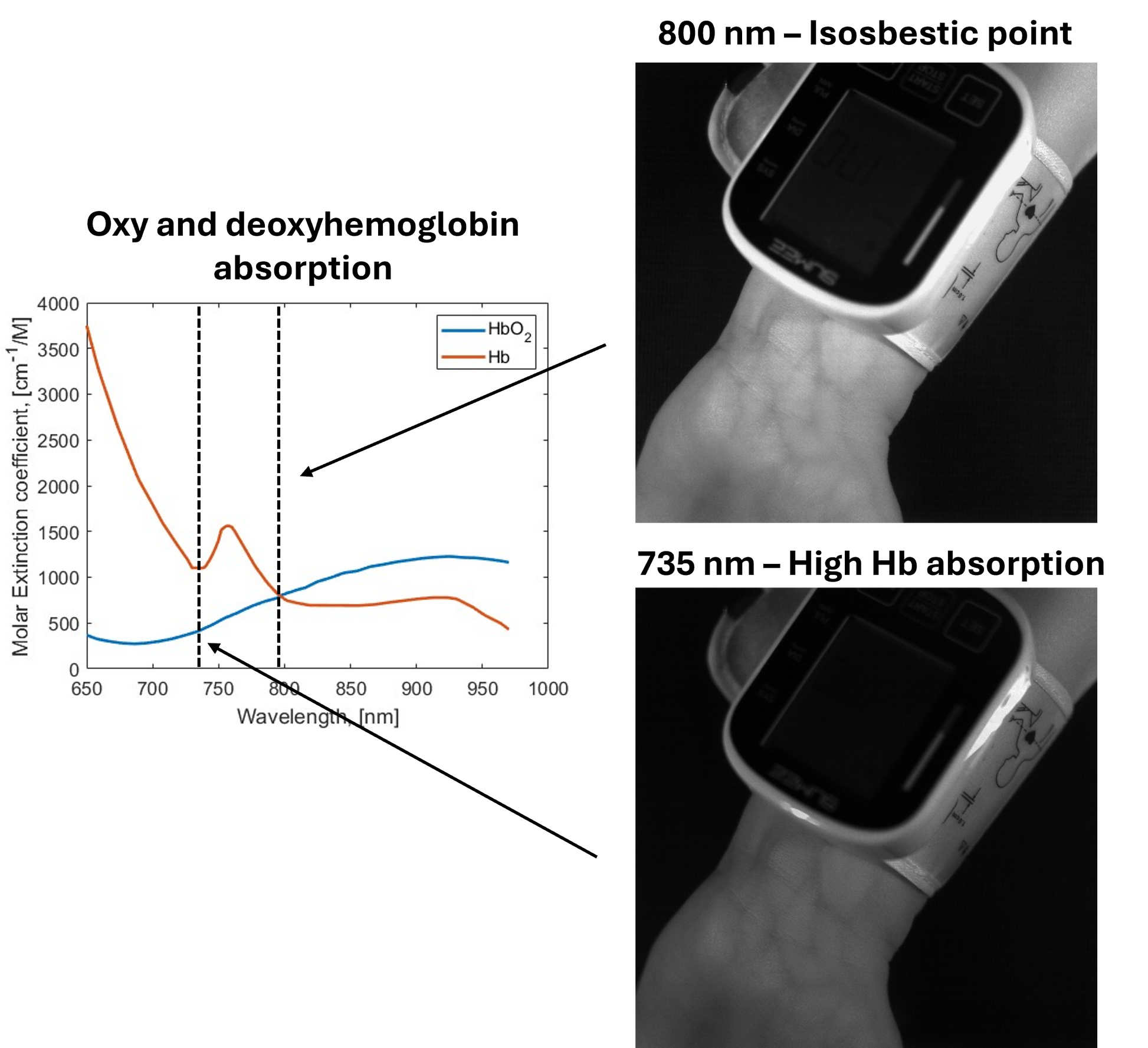Blood De-oxygenation monitoring
Blood De-oxygenation monitoring
Become a customer to access all support documents.
Non-contact blood oxygenation monitoring offers numerous advantages, making it an attractive option for various applications. Non-contact monitoring is invaluable in settings where traditional methods are impractical, such as in neonatology for monitoring newborns, or in burn units where skin integrity must be preserved.
In this example oxygenation of a hand was restricted by applying a pressure measuring cuff. The hand was illuminated using MSLED-BIO-2-4 at four distinct spectral bands – 730 nm, 805 nm, 850 nm and 940 nm. A video was recorded during the measurement using MSC2-BIO-1-A, which features similar spectral bands – 735, 800, 865 and 930 nm.
Typically, deoxygenated hemoglobin (Hb) has a higher absorption up to ~800nm in near-infrared spectrum. At ~800 nm the absorption of deoxy and oxyhemoglobin (HbO2) is approximately the same, known as the isosbestic point. For wavelengths longer than 800 nm the HbO2 absorption starts to dominate.
When blood circulation is restricted the light reflectance at the isosbestic point is expected to remain relatively stable, as the total blood volume doesn't change. This will further lead to Hb level increase and HbO2 level decrease as tissue keeps consuming the oxygen present in the blood. Therefore, a ratio between light reflectance at 735 nm, representing Hb absorption, and the reflectance at the isosbestic point at 800 nm, representing all blood absorption, should provide an indication of blood deoxygenation level.
Relative pressure applied to the hand is depicted with a yellow curve. The blue data points represent the measured ratio between 735nm/800nm from the region of interest during pressure application. It can be seen how the blood deoxygenation ratio increases, indicating reduction in oxygenation, as the pressure increases. After the pressure is released and blood is regaining the previous oxygenation level.
Blood absorption spectra were acquired from https://omlc.org/spectra/hemoglobin/summary.html
